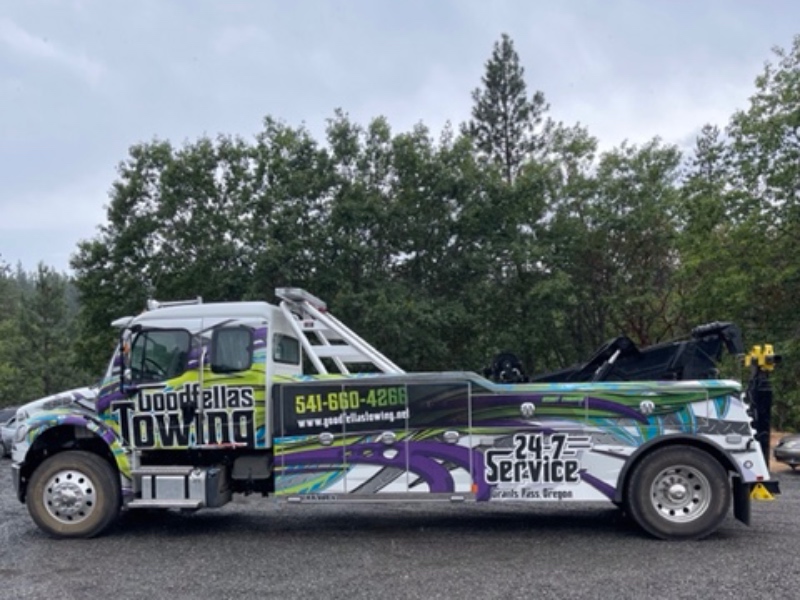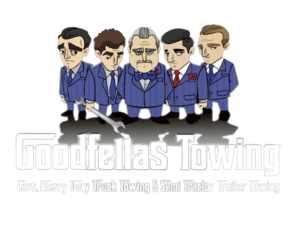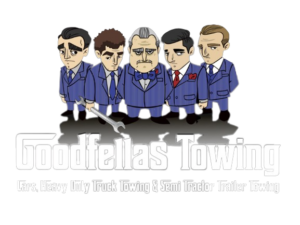Keeping It Together
When we’re out on the road, one of the most common situations we face is a truck that has jackknifed. A jackknife can happen fast and is often dangerous for everyone on the road. Fixing a jackknifed truck on busy roads, for example when we’re working on an I-5 tractor-trailer recovery, can be especially challenging due to the high speeds and heavy traffic on this busy route. Let’s look at why trucks jackknife, what conditions make them more likely, and most importantly, how to prevent them.

What Causes a Truck to Jackknife?
A jackknife happens when the trailer pushes the tractor (the front part of the truck) to one side, forming an “L” or “V” shape. Several factors can cause this sudden, dangerous movement:
- Slippery Roads: Wet, icy, or oily roads can reduce the friction between the tires and the surface. When a truck loses traction, the trailer can swing out to the side, leading to a jackknife.
- Sudden Braking: When a truck driver brakes too hard or suddenly, the trailer’s momentum continues to move forward. If the brakes lock up, it can cause the trailer to swing around the cab.
- Speeding: Driving too fast, especially around curves or downhill, makes it harder to control the truck. If the driver needs to brake suddenly, the risk of jackknifing increases significantly.
Conditions That Increase the Risk of Jackknifing
Jackknifing doesn’t happen in a vacuum. Certain conditions make it more likely:
Poor Road Conditions
Rain, ice, or even spilled fuel can turn a regular trip into a dangerous one. When the road is slippery, traction becomes almost nonexistent. Drivers need to take extra care in these situations. As we have learned after many successful I-5 tractor-trailer recovery jobs, reducing speed and maintaining a safe distance from other vehicles can make a huge difference.
Unbalanced Loads
The weight of the cargo also plays a big role. If the load isn’t distributed properly, the trailer can become unstable. A heavier load at the back of the trailer can make it sway more easily, especially in windy conditions or sharp turns. Checking the load distribution before hitting the road is crucial to prevent a potential jackknife.
How to Prevent a Jackknife
Preventing a jackknife involves a mix of proper driving habits, good equipment, and smart planning. Here are some steps that drivers can take to reduce the risk:
Practice Good Driving Habits
Good driving habits are essential to avoiding a jackknife. Here are a few practices that every truck driver should follow:
- Avoid Sudden Braking: Always brake gently, especially in slippery conditions. Use steady, gradual pressure to slow down, giving the trailer time to respond.
- Maintain Safe Speeds: Stick to the speed limit and adjust your speed according to road conditions. Slower speeds give you more time to react if something goes wrong.
- Keep a Safe Distance: Always leave plenty of space between your truck and the vehicle in front of you. This extra space allows more time to brake slowly and avoid sudden stops.

Our Role in Keeping the Roads Safe
At Goodfellas Towing, we understand that jackknifing is a serious threat. Our team handles I-5 tractor-trailer recovery situations regularly, and we’ve seen how quickly a jackknife incident can escalate into a dangerous situation for all road users. That’s why we are committed to providing expert I-5 tractor-trailer recovery services whenever needed, ensuring that our team is prepared to handle any emergency. Whether it’s a minor incident or a major I-5 tractor-trailer recovery, we act fast to clear the road and restore safety. Our goal is to minimize downtime, keep traffic flowing, and make sure every I-5 tractor-trailer recovery ends safely for everyone involved. At Goodfellas Towing, we’re dedicated to protecting the roads and the people who use them. With every I-5 tractor-trailer recovery we complete.


